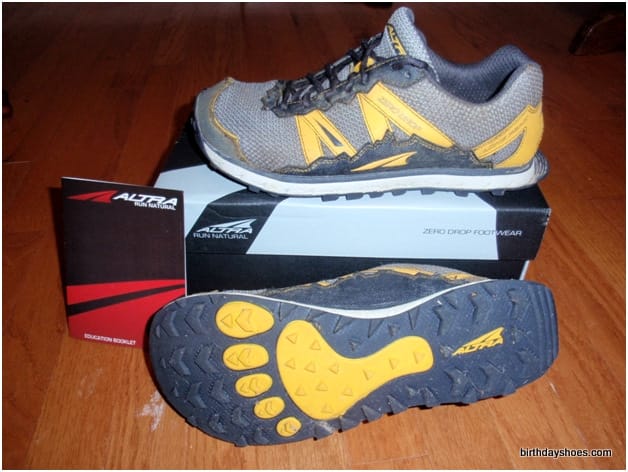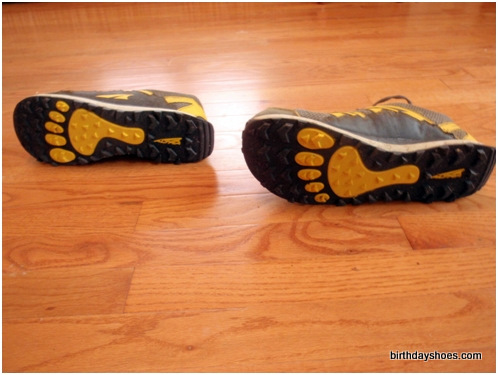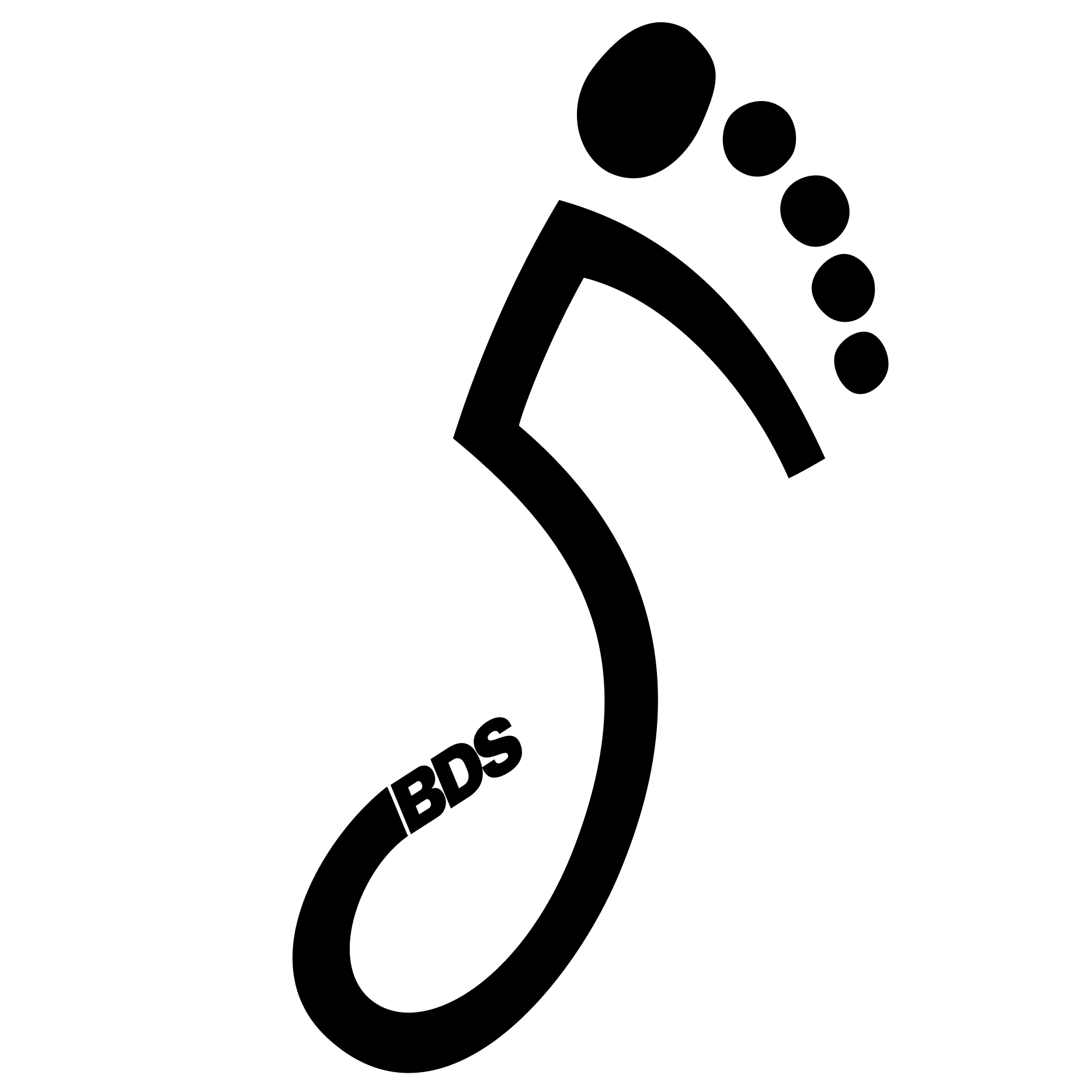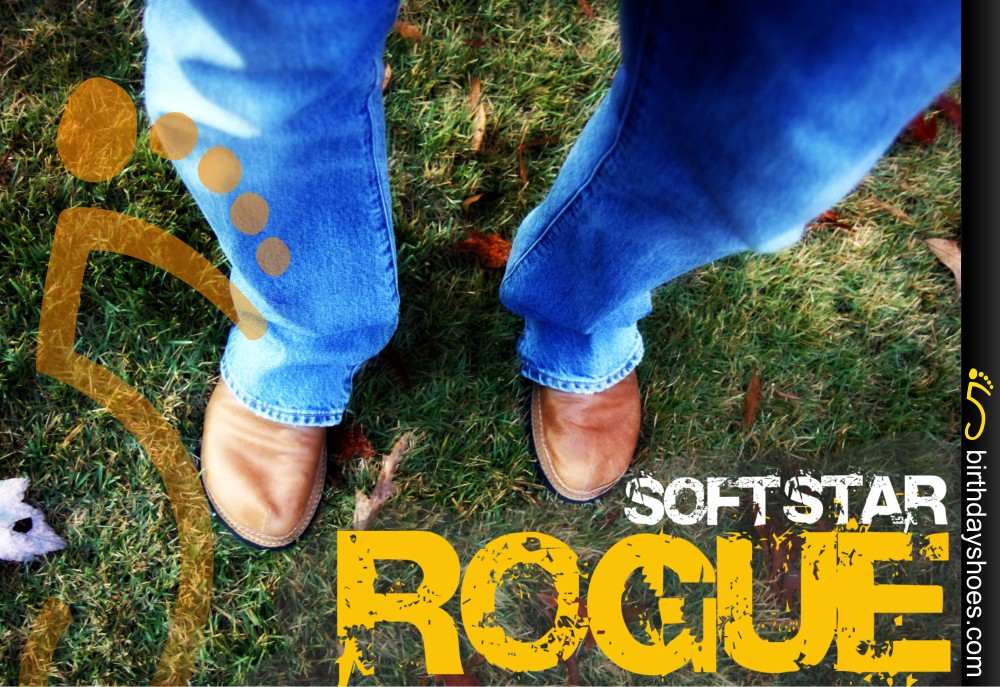Altra Lone Peak Review
“Blending cushioned protection with the benefits of barefoot freedom, Altra footwear is designed to reduce injury and promote proper technique for the most natural run. Every shoe features Zero Drop™ and a foot-shaped, gender-specific design so everyone…

Overview
Today I'll be reviewing the Altra Lone Peak, a new trail running shoe from Altra Running, a company built from the ground up on manufacturing zero-drop running shoes. Let's start with Altra's description of the Lone Peak:
the Lone Peak, one of the rockiest, toughest mountains on the Wasatch Range
The first thing most people notice about any of the shoes in the Altra line is the foot shaped design. This feature alone sets the Altra shoe line apart from most of their peers. The distinctive toe box follows the shape of the foot and allows plenty of room for your toes to splay naturally. The next comment I typically get is “How old are those shoes?” It’s not that the shoes themselves are old it’s that the design itself seems to be a throwback to the early days of trail shoes. Anybody remember the original Adidas Response Trail?
The Altra Lone Peak skirts the boundary of the minimalist running shoe category. The Lone Peak is definitely minimal because of its zero heel-to-toe drop and anatomically correct shape (custom for women and men) resulting in a nice wide toe box for proper toe splay. However at 9.9oz it’s not the sveltest but it’s hardly a beast. Also the embedded rock plate and midsole substantially reduce proprioception and ground feel.
So are these reasonable tradeoffs for certain trail running situations? I believe so and I’ll tell you why below!
The Upper

As can be seen in these photographs the Lone Peak upper materials use a very large open weave mesh that is extremely breathable. There is a liner on the inside of the mesh that prevents trail grit and particulates from getting the shoe while still allowing ample air circulation.
In addition to the asymmetric lacing, the Lone Peak utilizes what Altra calls the ‘A’-Wrap (the orange-yellow strips at the midfoot) and the HeelClaw™ (orange-yellow strips in the heel) to lock your heel and midfoot into the shoe while still allowing ample toe room.
Another obvious feature of the Lone Peak upper is the large toe bumper (shaped like a mountain peak). As this shoe was designed for ultra distance, rugged runs, having some smash and crash protection for the toes is always nice.
A nice feature of the entire Altra line is the minimization of seams. I can’t evaluate how these shoes would handle running sockless, but I’ve encountered no foot discomfort: abrasions, blisters, etc., even with the thin socks I wear.
All the Altra line comes with removable, thin foam footbeds. There is absolutely no arch support in the Lone Peak — the foot bed of the shoe is completely flat and shaped like your foot. The Lone Peak, along with all the other Altra models, is designed gender specific to accommodate the unique female and male foot forms. In general this means that the female Lone Peak runs narrower in the heel than the male version and the toe box of the female is a bit narrower than the mens.
Overall my first impressions were very positive. I’d been so used to slipping my feet into trail shoes that ended up crowding my toes together; not so with the Lone Peak. I think the large open weave mesh will help keep my feet cool during the swelteringly humid summers where I live (Alabama).
However, I think some obvious improvements could be made to slim down this shoe. There seems to me to be a lot of unnecessary material on the outer upper including the silhouette of the Wasatch mountain range on either side of the shoe. The toe bumper material while necessary could possibly be reduced as well. Not big issues but keeping the weight down is always a good thing, especially if it doesn’t sacrifice protection. Another area of concern is at the metatarsal flex points of the shoe (right at the base of the Wasatch Range). Leaving the open weave mesh to attach directly to the midsole is a recipe for developing a tear over time (believe me, I’ve seen this happen in dozens of trail shoes). I even noticed some of the stitching coming undone where the Wasatch Range silhouette is bonded to the open weave mesh near the metatarsal flex point on my right shoe. In all fairness though, the types of terrain I’ve been using these shoes in is far from typical and the damage may very well have been incurred by a stick or other off-trail debris (Can you say, "briar patch?").
So while the Wasatch Range silhouette may be a bit much, I still believe it’s necessary to have a tough material for the open weave mesh to bond to first and have the tough material attach to the midsole. In shoes I’ve worn of that nature I’ve never had issues with tearing at the metatarsal flex point.
The midsole

The midsole of the Lone Peak consists of sandwiched layers. The first layer, immediately below the footbed is what Altra calls A-Bound™ which they describe as an:
Environmentally friendly, this energy-return compound is made of recycled materials. Offering extra protection, this unique layer sits directly under the foot to return energy back into each stride. It reduces the impact of hard surfaces while still maintaining ground feedback. Traditional running shoe foam compresses 70-90% while A-Bound™ compresses 2-3x less so it won't deform over time.
The second layer is what Altra calls the StoneGuard™, which is exactly what it sounds like a flexible piece of 1mm thick plastic that helps protect the feet from stone bruising.
The last layer is rather stiff EVA foam. The overall midsole thickness is 7mm throughout.
If you’re thinking this is a “cushy” trail shoe you’d be surprised to learn that the Lone Peak midsole is far from it. In fact the overall feel is very firm. Ground feel, while much reduced, isn’t completely eliminated: I could still notice gravel and pointy rocks underfoot but the rock plate seemed to be doing its job to protect my feet.
The sole

Altra calls it the TrailClaw™ Outsole and it is indeed one of the most unique sole designs I’ve ever encountered. Just seeing this bright yellow “foot” on the bottom of my shoe was enough to spark many a conversation during training runs with friends. Perhaps a bit gimmicky but I like it. The only issue is that since the barefoot shape isn’t actually embossed enough, it really doesn’t leave a footprint like you’d think it would. If you’re going to have a bare foot shape on the bottom of your shoe it would be cool to leave this little bare foot prints on the trail!
Anyhow, the strongest canted lugs are positioned directly underneath your metatarsals followed up with the “claws” positioned just forward. While Altra says they’re using a sticky rubber compound for the sole, I haven’t seen much about it that makes it sticky. In slick rocky conditions (think wet and mossy limestone) the sticky rubber is ineffective; then again, not many shoes I’ve worn can handle that sort of slipperiness! In the mud it’s a different matter entirely, and the sole performs very well indeed. The outer lugs really aid in contouring up side-sloped terrain.
The concept of sticky rubber is a good one, but you need a lot of surface area for it to be truly effective. How do you maximize surface area on the sole of the shoe? You need a lot of lugs or you need the sole of the shoe to be able to deform enough so that as the sole encounters the trail surface materials it can literally wrap itself around them. The most ineffective sole would be one that is very stiff and has too few lugs. It is difficult to always foot strike with the bottom of the shoe square on the rocky or rooty surface enough to fully utilize the sticky rubber of the Lone Peak. Perhaps if the mid-out sole could a bit less stiff and allow a bit more deformation the sticky rubber could be more effective.
Lastly, one of the other most notable features of the Lone Peak sole is the TrailRudder™, which is a throwback to early days of the first trail running shoes (Now you see why I mentioned the original Adidas Trail Response). I’m not exactly sure what this rudder is supposed to do exactly but it is pretty cool. According to Altra the rudder is supposed to aid in very steep descents. I haven’t yet tested this feature in any extreme off-trail excursions just yet (Read: Barkley Marathon training), but I can see how this might work. Imagine you’re running/hiking down a very steep hill side. Unless you’re completely suicidal you’re going to be leaning back a bit and digging those heels into the steep ground. That extra bit of protruding sole should help provide additional traction.
Function
As of this review I have tested the Altra Lone Peak running on pavement and gravel roads and on easy and extremely difficult trail and off trail conditions. In short, I’ve put these shoes through the wringer that is part of my current training regime. At the time of this review I’ve logged over 131 miles on these shoes. Here are my impressions:
Pavement — While this shoe is not meant for or designed to run on pavement, it is a trail dedicated shoe, it still felt pretty good on the roads and paved paths I ran on. I’ve noticed that some trail shoes actually tend to slip on wet pavement. This is one area where the advertised sticky rubber sole really does work. The zero heel-to-drop of the Lone Peak of course made it easy to run with my midfoot strike form.
Trails — The trails I tested the Lone Peak on varied from easy and dry trails with little elevation change to extremely hilly, wet, muddy, rooty, and slippery limestone thrown in for good measure. I even used the Lone Peak on a particularly tough power line cut repeat workout where I covered 2000’ of gain (and equal descent) packed into less than 3 miles. My longest run was right at 32 miles training on our local Mountain Mist 50km course in Monte Sano State Park (running the second half of the course twice). As previously mentioned, the only issue I had with this shoe was on the slick rocks. The Lone Peak held its own quite well in the mud, steep slopes and roots and even felt great during a couple trail tempo run sessions. So whether I was running fast over rough terrain or plodding along run/hiking on a long training session the shoes felt great and unnoticeable, which is what any good shoe should do!
Initial Conclusion
In short, this is probably the most comfortable trail shoe I’ve ever worn in my 20+ years of trail running. I’ve been looking for a shoe that I’d be willing to run my next mountain 100 mile race in and I think I’ve found that shoe!
It should be noted that Altra is a very, very new company and I don’t think they’ve even been making their products for over a year yet. So what you see from them at this moment are akin to prototypes. I can only envision more improvements to come as more and more folks provide feedback back to Altra.
As far as my own feedback I’d just have to add that it would be nice if the Lone Peak was a bit more flexible in the forefoot and a bit lighter. I think that with some cosmetic and material changes the shoe could be made significantly lighter. While the lugs in the tread are very adequate I would like it if they were a bit deeper or slightly more numerous for even better traction. The sticky rubber could be a bit more sticky or, better, the mid-outsole could be slightly softer to allow a bit more deformation on trail surfaces to allow greater traction.
If you’re an avid trail runner who is dabbling in minimalist footwear but wants just enough shoe to properly protect your feet from sharp objects and toe/heel/ankle jams and stone bruising;, then this is the shoe for you. The fact that it’s zero drop and has an ample toe box that allows natural toe splay should be enough!
(You can pick up the Lone Peak off Altra's website for $109.99)

Update January 14th, 2012.
Wanted to add that I've noticed that my heel slips slightly in the Lone Peak, my wife Kathy, who also runs in the Lone Peak reports the same. However, I only seem to notice the heel slippage when I'm walking around, I never notice on any of my runs and haven't had any issues with blisters or anything (and I've really put these shoes through a lot of difficult trials both on and off trail!). Perhaps a re-lacing style will mitigate the slippage, but it's possibly another area for improvement; shrink the width of the heel cup some for a more firm fit. So if you have narrow heels like I do you may slip!




